
Medtronic PLC
NYSE:MDT

Medtronic PLC
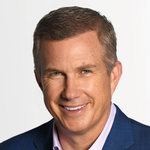

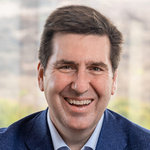


In the intricate world of medical technology, Medtronic PLC stands tall as one of the foremost innovators transforming the landscape of healthcare. Founded in 1949 as a humble medical supply repair shop in Minnesota, Medtronic has grown into a global titan, driven by the enduring mission to alleviate pain, restore health, and extend life. The company's breadth is vast, touching nearly every aspect of patient care, from advanced robotic-assisted surgery systems to sophisticated insulin pumps. At its core, Medtronic thrives on relentless research and development, continually bridging the gap between cutting-edge technology and practical medical solutions. By forging deep alliances with healthcare providers and systems around the globe, the company ensures its innovations are not only groundbreaking but also widely accessible.
The company's financial engine purrs to life primarily through the development and sale of medical devices across four major segments: Cardiac and Vascular Group, Minimally Invasive Therapies, Restorative Therapies Group, and Diabetes Group. Each unit meticulously focuses on innovating and providing solutions relevant to its field, ensuring a diversified portfolio with robust pipelines. For instance, within the Cardiac and Vascular Group, Medtronic supplies life-saving products like pacemakers and stents while also exploring breakthrough therapies such as transcatheter heart valves. By capitalizing on a global presence, the company strategically taps into both mature markets in North America and Europe and emerging markets across Asia and Latin America, thereby driving substantial revenue streams. Through this multifaceted operational framework, Medtronic not only sustains its market dominance but also reinvests in the future of medical technology, symbolizing a perpetual cycle of growth and innovation.
Earnings Calls
Management

Geoffrey S. Martha is an influential executive known for his leadership at Medtronic PLC, a global leader in medical technology. Geoffrey Martha became Chief Executive Officer of Medtronic in April 2020 and later assumed the role of Chairman of the Board in December 2020. Under his leadership, Medtronic has continued to expand its influence in the healthcare industry, focusing on innovative technologies and solutions to improve patient outcomes around the world. Prior to becoming CEO, Martha served in various leadership roles within Medtronic, including as President of the company’s Restorative Therapies Group (RTG), where he was responsible for overseeing a diverse portfolio of products and therapies. He is known for his strategic vision and a strong emphasis on operational excellence, customer engagement, and global collaboration. Before joining Medtronic, Geoffrey Martha held several roles at General Electric (GE), where he gained extensive experience in business development, commercial operations, and general management. His educational background includes a Bachelor of Science degree in Finance from Pennsylvania State University, where his leadership potential began to take shape. Under Martha's guidance, Medtronic has focused on driving growth through technological advancement, strategic acquisitions, and a commitment to addressing the world's most challenging health problems. His forward-thinking approach has reinforced Medtronic's position as a leader in medical technology and innovation.

Sean M. Salmon is a prominent executive at Medtronic PLC, a global leader in medical technology. Sean serves as the Executive Vice President and President of the Cardiovascular Portfolio at Medtronic. In his role, he oversees the company’s cardiovascular businesses, which encompass Cardiac Rhythm & Heart Failure, Coronary & Structural Heart, and Aortic, Peripheral & Venous portfolios. Sean M. Salmon joined Medtronic in 2004 and has held various leadership positions throughout his tenure. These roles have included serving as the Senior Vice President and President of the Coronary & Structural Heart division, where he was instrumental in driving growth and innovation within the business. His leadership has been characterized by a strong focus on advancing new technologies and expanding global market access for life-saving medical products. Throughout his career, Sean has been recognized for his strategic vision, operational excellence, and commitment to patient-centric healthcare solutions. His efforts contribute significantly to Medtronic's mission of alleviating pain, restoring health, and extending life for patients worldwide.

Brett A. Wall is an esteemed executive in the medical technology industry, known for his role at Medtronic PLC, one of the leading global healthcare solutions companies. As Executive Vice President and President of the Neuroscience Portfolio, Wall is responsible for leading a diverse range of the company's operations focused on neurological disorders and therapies. Brett Wall joined Medtronic in 2014 following its acquisition of Covidien, where he served in various leadership roles. At Medtronic, Wall's strategic and leadership skills have been pivotal in advancing innovative products and solutions, particularly in the fields of brain health, pain management, and spinal therapies, contributing significantly to Medtronic's mission of alleviating pain, restoring health, and extending life. His career in the medical technology industry spans over two decades, and he has gained extensive experience in business development, sales, and marketing across different geographies and healthcare segments. Wall's leadership is characterized by his commitment to strategic growth, operational excellence, and fostering a culture of innovation. His work not only focuses on advancing Medtronic's business interests but also on enhancing patient outcomes through transformative healthcare technologies.

Gregory L. Smith is a notable executive in the healthcare and medical technology industry, particularly known for his role at Medtronic PLC. As the Executive Vice President of Global Operations and Supply Chain at Medtronic, he is responsible for overseeing the company's global manufacturing, supply chain, and distribution operations. Mr. Smith brings extensive experience to his role, having worked in various leadership positions in supply chain management and operations across several industries. Before joining Medtronic, Gregory L. Smith held significant positions in other major corporations. Notably, he served as Senior Vice President of Global Operations at Boeing, where he was instrumental in enhancing the efficiency and effectiveness of the company's supply chain organization. His career is marked by a focus on operational excellence, strategic planning, and continuous improvement, which he leverages to drive innovation and efficiency in Medtronic's complex global operations. Gregory L. Smith is recognized for his leadership abilities, strategic vision, and commitment to advancing Medtronic's mission of delivering high-quality medical technologies to patients worldwide. His contributions are influential in ensuring the company's supply chain resilience and agility, crucial for meeting the demands of the healthcare industry.

Gary Corona is an experienced executive known for his strategic contributions to Medtronic PLC, a leading global healthcare technology company. With a strong background in finance and operations, Gary has played a key role in driving business growth and operational efficiency within the organization. Gary Corona earned his reputation through his adept leadership and expertise in managing complex financial structures. His role often involved overseeing financial planning, risk management, and ensuring the company's fiscal health aligns with its long-term objectives. At Medtronic, he is recognized for fostering a culture of innovation and continuous improvement, contributing to the company's mission of transforming healthcare. Throughout his career at Medtronic, Gary has been instrumental in various strategic initiatives, including mergers and acquisitions, which have helped expand the company's global footprint and technological capabilities. He is also known for his collaborative approach, working closely with other executives and teams to implement effective strategies that enhance Medtronic's competitive edge in the medical devices and healthcare sector. Moreover, Gary Corona is applauded for his commitment to corporate governance and ethical business practices, ensuring that Medtronic maintains its reputation as a trusted leader in healthcare technology. His leadership continues to inspire and guide the organization towards achieving its mission of improving lives through medical innovation.

Mark Ploof is an experienced executive who has served as the Executive Vice President of Global Operations and Business Services at Medtronic PLC, a leading global healthcare technology company. In his role, Ploof is responsible for overseeing the company's global manufacturing, supply chain, and business services functions. He has played a crucial role in driving operational excellence and ensuring that Medtronic’s extensive range of medical devices and technologies are produced and distributed efficiently to meet global healthcare needs. Ploof brings a wealth of experience in operations and business management to his role, contributing significantly to Medtronic's mission to alleviate pain, restore health, and extend life. He is known for his strategic leadership and commitment to innovation in the healthcare sector.
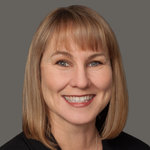
Jennifer M. Kirk is a notable financial executive and business leader associated with Medtronic PLC, a global leader in medical technology. In her role, she has held significant responsibilities aimed at advancing the company's financial strategies and operations. With her extensive experience in finance and strategic planning, Ms. Kirk has effectively contributed to Medtronic's growth and its mission of developing innovative healthcare solutions. Her expertise often encompasses financial planning and analysis, financial reporting, investor relations, and corporate strategy. Ms. Kirk's leadership is recognized for her ability to drive financial performance and lead complex financial projects. She has played a critical role in aligning financial goals with business objectives, ensuring operational efficiency and supporting sustainable growth for the company. Before her tenure at Medtronic, Jennifer M. Kirk had accrued substantial experience in finance and strategic roles within the healthcare or related industries, which equipped her with a deep understanding of the sector's intricacies. Her contributions not only strengthen Medtronic's financial standing but also enhance its capacity to innovate and provide life-transforming medical technologies to improve patient care worldwide.
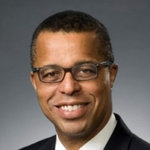
Dr. Kenneth E. Washington is the Executive Vice President and Chief Technology Officer (CTO) at Medtronic PLC. Before joining Medtronic, he held significant leadership positions at several prominent technology companies. He has extensive experience in leading advanced technology initiatives and fostering innovation. Dr. Washington previously served as the Chief Technology Officer at Ford Motor Company, where he was responsible for driving the company’s technology strategy, including advancements in vehicle connectivity, autonomous vehicle development, and artificial intelligence. His work focused on the digital evolution of the automotive industry and integrating new technologies into Ford's business model. He also held various leadership roles at Lockheed Martin and Sandia National Laboratories, where he contributed to significant advancements in science and engineering projects. Dr. Washington has a strong educational background in engineering and computer science, holding advanced degrees in the field. At Medtronic, Dr. Washington is responsible for overseeing the company's global technology strategy and its research and development efforts, ensuring the creation and integration of pioneering medical technologies to improve patient care worldwide. His role involves fostering collaboration and innovation to maintain Medtronic's leadership in the medical technology industry.
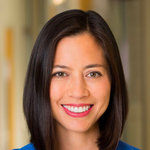
Dr. Laura Mauri, M.D., M.Sc., is a distinguished cardiologist and clinical researcher known for her significant contributions to the field of interventional cardiology. At Medtronic PLC, she serves as Senior Vice President and Chief Scientific, Medical, and Regulatory Officer. In this role, she oversees global clinical research strategies, medical affairs, and regulatory interactions, guiding Medtronic’s commitment to scientific excellence and innovation in medical technology. Before joining Medtronic, Dr. Mauri was a Professor of Medicine at Harvard Medical School and served as an interventional cardiologist at the Brigham and Women’s Hospital in Boston. She also worked with the Harvard Clinical Research Institute, where she directed numerous pivotal clinical trials that have shaped current practices in cardiology and medical device implementation. Dr. Mauri holds an M.D. from Harvard Medical School and a Master of Science in Epidemiology from the Harvard School of Public Health. Her work is highly regarded for its impact on patient care and informed medical device development. Throughout her career, she has been recognized for her leadership in academia, clinical practice, and industry, and has published extensively in peer-reviewed medical journals. Her transition to Medtronic marks a continuation of her dedication to advancing cardiovascular medicine and improving patient outcomes through innovation and collaboration.

Ryan Weispfenning is a key executive at Medtronic PLC, where he serves as the Chief Financial Officer (CFO). He has been with Medtronic for a significant portion of his career, demonstrating strong leadership and financial acumen. Weispfenning has played a crucial role in overseeing Medtronic's financial strategies and operations, ensuring the company's fiscal health and driving long-term growth. His expertise in finance and a deep understanding of the medical technology industry have been instrumental in guiding Medtronic's global financial strategy, mergers, acquisitions, and other key financial initiatives. Prior to his current role, he held various positions within Medtronic, contributing to their development and operational success.

















































 You don't have any saved screeners yet
You don't have any saved screeners yet
